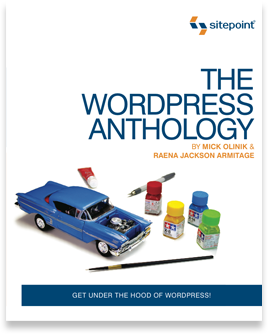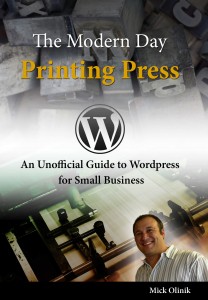In the United States, Thanksgiving is a time when we reflect on all of the things we are truly thankful for. When I think about my life, I realize I’m thankful for a wonderful family and wife, a flourishing business, and all of the blessings that God has been good enough to provide to me. And that’s fun to talk and write about, but there’s something more… it’s a bit nerdier, geekier, and dare I say even more elegant than any of that which I am also thankful for – WordPress.
Yeah, yeah… I know this sounds lame, but I’m genuinely thankful for WordPress. And it’s not just cause it helps me make a living – I’m thankful for it because WordPress helps me make the lives of my clients genuinely easier all the way around. Let me explain…
I began my career as many developers do… in a local market model. After learning my trade of turning people’s businesses into websites, I went out, hung a shingle and sold websites all over town. I worked my butt off, and I loved doing it… and I took my work very personally. I designed every graphic, agonized over every line of code, and personally drove out to every single one of my clients whenever they needed me and made sure they were taken care of and happy. In short, I begun my habit of making an implicit personal guarantee to each and every one of my clients that they would be happy with what they ended up with – a personal guarantee I still make with each of my clients today. Just as I do now, I wanted to be damn proud to have my own name attached to each of my clients.
But there was a problem. In the early days (circa 1998), most of my clients weren’t able to actually manage their websites on their own because content management systems had barely even come into existence yet. Like many web developers at the time, my partner and I created a succession of proprietary, custom content management systems that were designed to help our clients update their websites themselves. And guess what, they all pretty much sucked. Of course, they were good for the time, but then again there was also a time when the Model T was considered cutting edge. We tried really hard, but our client’s solutions were clearly lacking… and we weren’t alone.
As a conscientious developer, I just didn’t feel good about the situation – and when I first realized that my number one job needed to be my client’s biggest advocate… nothing less than the best solution possible that actually worked would do. True, there was really no better option available at the time from a content management perspective, but it still didn’t make me happy about the crappy offering I was ultimately giving to each of my clients. So I’d dig in and started tearing apart every content management system I could find… Mambo (which later became Joomla!) and Drupal were high on my list, and I messed around with various WYSIWYG editors that were supposedly the placebo to fix the all too common issue of client ire, but none of it helped. Content management systems sucked, and there was not much I could do about it. By the time 2005 came around, I was seriously reconsidering my place in web development altogether…
And then came WordPress.
It wasn’t perfect then and it isn’t perfect now, but WordPress was (and remains) a game changer. The first time I installed it and started looking around, I felt that this system was different. While it was less cumbersome than other content management systems that I had used, what really turned me on from a developer’s perspective was that it had a very simple to use interface for my clients that I knew they’d be able to use consistently and easily. Moreover, the system was structured in a way that would let me easily add the functionality I knew my clients would need moving forward. Better yet, it was entirely open source and was comprised of nothing but PHP & HTML (and CSS for styling, of course).

WordPress has come a long way since I started playing with it many years ago now, but the core reasons I was drawn to it have remained true and caused me to become a vocal advocate and educator for it. My most recent book, The WordPress Anthology published by Sitepoint, is a textbook-style manual that covers WordPress from its history and basic installation processes to some of the most advanced, cutting edge techniques being used by the best WordPress developers in the business today… and it was an honor to write it. In contrast, my book release last year, The Modern Day Printing Press, is a much shorter book aimed at educating small business owners (the very same clients I work with and have advocated for since the beginning of my career) on exactly what they need to know about how a website can help them… and why they should use WordPress to help them successfully reach their goals.

This Thanksgiving, I sit here as a massive WordPress advocate. And not because I earn a sizable portion of my living because of WordPress (although that is true – I do earn my living in large part based on WordPress), but because I am finally confident that the content management system I give my clients is powerful enough, flexible enough, and intuitive enough to allow their websites to be a genuine asset to their business – not a hinderance. WordPress lets me provide solutions to my clients that I can stand behind and feel good about. So thanks Matt Mullenweg. Thanks Automattic. And thanks WordPress community… I couldn’t appreciate you guys more.
Go Lions.



